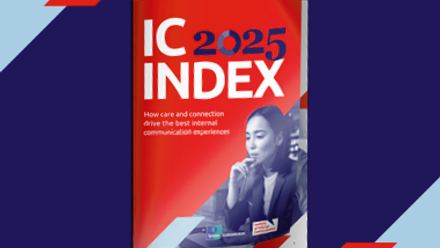A robust, directed strategy for internal communications can adjust the workforce mindset in a way that stimulates growth. But an effective approach doesn't tend to happen in a vacuum — it needs to be influenced by capable leadership.
Of course, leaders come in all flavours, and as such their approach to the role can dictate the efficacy and direction of internal communication. We're going to take a closer look at some of the styles of leadership, and what impact they have on internal communications. What elements can be positive drivers of success, and what practical actions can be taken to make the best use of the positive traits?
Authoritative leadershipAuthoritative leadership tends to get something of a bad rap. It's seen as one of the less flexible styles, as it relies on the personality of the leader as the driving force of the company, with employees following their wake. This is often not considered conducive to good internal communication.
However, it's not by any means the same as authoritarian leadership — authoritative leaders tend to inspire rather than simply command. The distinction here is an emphasis on vision. This suits some companies, and if you are committed to it, some areas can help ensure it benefits and enhances internal communications.
These include:
Leaning into empathy
As authoritative leaders can occasionally be considered overbearing, they must undertake internal communications from an empathetic standpoint.
Understand what the emotional components of the issues you need to communicate are. Gain a sense of who the teams are that are most affected by messaging, and what will motivate them. This gives an element of personalisation to communications and helps to break down some of the natural barriers this leadership style can raise.
Share the vision
\One of the key components of authoritative leadership is vision — the entrepreneur has developed a goal for the business and is using that as the driving force. But that doesn't work if employees don't also share in and relate to this vision.
A recent study found that 81% of Millennial workers surveyed felt businesses needed to have a genuine purpose.
Wherever possible, communications should be framed from the perspective of achieving this vision, and how it affects employees in their day-to-day operations. Use channels, documents, and videos in a way that doesn't simply promote the vision, but encourages workers to come along on the journey to these ultimate goals.
Authentic leadershipAuthentic leadership is a relative newcomer in business. However, it is rapidly gaining adoption, as it tends to better reflect the needs and priorities of the contemporary workforce. Indeed, a recent study undertaken by institutions in three European countries found that employee innovation was boosted by authentic actions and relationships with leadership. As such, internal communications can make good use of this style.
Approaches should include:
Emphasis on relationships
One of the key tenets of authentic leadership is the propensity to build meaningful relationships with colleagues. Internal communications should be geared toward encouraging and supporting this.
When producing materials that address challenges or issues, leaders should be open about their own difficulties or experiences in these areas. Invite responses and discussions in a way that shows you are concerned not just with productivity, but how protocols and changes may affect workers' wellbeing. Employees are more likely to be responsive to leadership that they can make genuine connections with.
Demonstrate values
Authentic leadership is, at its heart, a values-led approach. Employees are increasingly prioritising working for businesses that not just have a mission statement, but demonstrate social responsibility to be at the core of everything they do.
Authentic leadership uses internal communications to reinforce how actions are directed by their values. Indeed, this requires honest communication when company actions fall short on their values and openness about how leaders intend to make improvements for the future.
It's equally important here that employees are confident that internal communication on values is two-way. There must be tools in place for them to make queries when they feel the business has fallen short on its responsibilities.
Democratic leadershipDemocratic leadership is one of the most open styles. It encourages participation from company employees at all levels and is aimed at ensuring decision-making is directed by the needs of the whole, rather than a single member of leadership. However, to effectively direct a company in this nature, there needs to be a tight rein on a highly communicative work culture. This means that internal communication must be both shaped by and a tool of this leadership style.
This should include:
Procedures for inclusion
Democratic leaders want their employees to be involved at all levels, but they also must be clear on how this is undertaken.
Produce documentation that formalises how employees should go about becoming involved in projects, boards and groups. When they are invited into brainstorming sessions, ensure there is a facilitator on hand to communicate the direction of the session and any boundaries, and to explain the next steps of the process. At no point should employees be unsure of how they can be more involved in the process or enquire about participation — this helps workers not only feel more connected to the business and its leaders, but also more supported.
Open dialogue channels
The democratic leadership style not just encourages, but relies upon an open dialogue between leadership and staff.
When colleagues feel as though their ideas, creativity, and concerns are taken seriously, and genuinely impact the company, they create deeper connections. Make certain there are formal channels in place for this to happen, particularly where remote workers are involved. But also create a culture that allows for leadership to be approached, and useful conversations undertaken in casual settings.
ConclusionEffective internal communications can make or break a business. In turn, the leadership style applied to implementing these communications can help shape their direction and efficacy. Carefully consider how your approach could be adjusted to not just communicate effectively with your workforce, but also encourage them to engage in dialogue in return.







